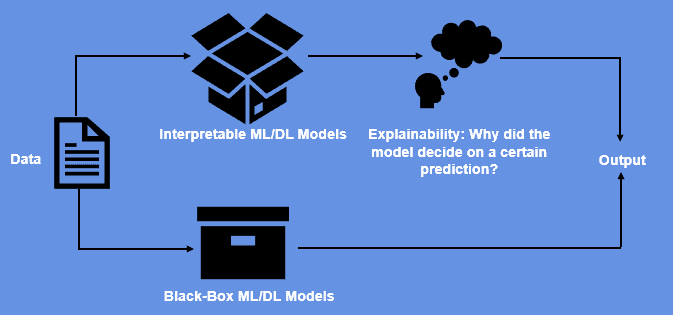1. Introduction
Over the past decade, significant advancements have been made in the field of Artificial Intelligence (AI), leading to the utilization of algorithms for solving a diverse array of real-world problems. To achieve these milestones, increasingly complex models and opaquely functioning AI systems have come into play.
In response, Explainable AI (XAI) has emerged as a solution to enhance transparency in AI applications and foster acceptance across critical domains.
In this tutorial, we’ll delve into the realm of Explainable AI, exploring its importance, methodologies, and practical applications.
2. Explainable AI (XAI)
XAI, in simple words, is a way to advance toward more transparent AI without restricting its use in essential sectors. Furthermore, XAI generally focuses on creating easy-to-understand, trustworthy strategies, and effectively managing the new generation of AI systems.
It’s critical for people to understand the rationale behind the judgments made when AI systems provide outcomes. This knowledge is essential for establishing trust in AI systems as well as for adhering to legal obligations that demand justice and accountability.
Besides, the black box issue can be resolved through XAI, which delivers transparent and understandable insights into the reasoning behind the conclusions reached by AI models. This increases the adoption and acceptability of AI technology by enabling stakeholders, such as developers, end users, and regulatory agencies, to thoroughly grasp the factors impacting AI judgments.
The following figure shows the difference between XAI and black-box Machine Learning (ML) and Deep Learning (DL) models:

3. Methods for Achieving Explainability
Several approaches have been proposed to address the drawbacks of explaining AI models, each proposing a different strategy for illuminating their thought processes. Among the well-known methods are:
- Feature Importance Analysis: The analysis of attributes that have the most influence on a model’s decision-making is known as feature importance analysis. Accordingly, developers can identify the variables that influence the model’s predictions by calculating the contribution of each input characteristic to the final output.
- LIME and SHAP: Two methods for explaining individual predictions are Local Interpretable Model-agnostic Explanations (LIME) and SHapley Additive exPlanations (SHAP). By training interpretable models on perturbed data points, LIME offers locally faithful explanations, whereas SHAP values each feature according to how much it contributes to the prediction.
- Rule-based Models: Models that can produce decision rules that imitate the actions of complex models. These rules can provide intuitive insights into decision-making because they are frequently human-readable.
- Attention Mechanisms: When a model, such as a neural network, makes a prediction, its attention mechanisms draw attention to particular input portions. Hence, making it clear where the model focused its attention and makes it easier to comprehend why.
- Model Distillation: the process of teaching a more straightforward, interpretable model to mimic the actions of a more complicated model. This condensed model acts as a stand-in, providing perceptions into the decision-making processes of the original model.
4. Applications of Explainable AI
Explainable AI finds uses in a variety of fields, enhancing accountability and decision-making:
- Healthcare: XAI can support diagnoses or treatment suggestions in medical diagnostics, assisting physicians in comprehending and having faith in AI-generated insights
- Finance: To ensure transparency in critical financial processes, XAI can assist financial institutions in explaining credit scoring decisions, investment suggestions, and fraud detection
- Autonomous Vehicles: The ability of passengers and pedestrians to comprehend why a vehicle made a particular decision while driving is crucial for autonomous vehicles
- Compliance with laws and regulations: XAI helps organizations comply with laws that require justification for the decisions AI systems make, preventing unfair or discriminatory consequences
5. Challenges and Future Directions
Although Explainable AI has come a long way, there are still problems. It can be difficult to balance model performance and interpretability because doing so might cause accuracy to decline. Additionally, it is difficult to provide an all-encompassing definition of “explanation” that meets the needs of many stakeholders.
Explainable AI has a bright future. In order to enable models to generate accurate predictions while providing clear explanations, researchers are striving to create hybrid models that combine the strength of deep learning with interpretable components.
It will be essential to continue working together with AI practitioners, ethicists, and politicians to develop standardized procedures to ensure ethical and understandable AI.
6. Conclusion
In conclusion, explainable AI (XAI) shines as a beacon of transparency. XAI builds trust, encourages accountability, and promotes the ethical adoption of AI technologies across industries by revealing the mysteries of the black box and offering understandable insights.
Researchers and practitioners work to achieve the delicate balance between accuracy and interpretability as the path to completely intelligible AI continues, ensuring a future where AI systems make intelligent judgments and communicate the reasons behind them.